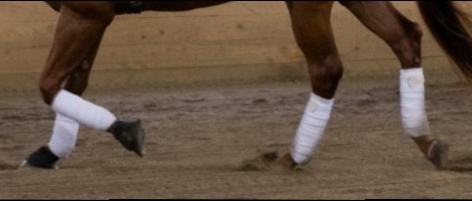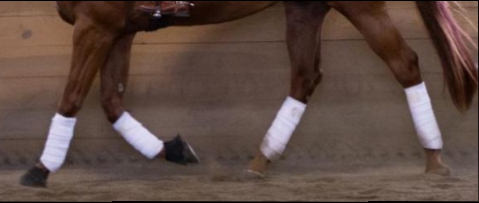I was going through some old photos I took of someone else’s horse from over a year ago. When you watched the horse trot in person, you could see something was off about it but I don’t have a trained eye to spot things in motion. I think the horse had some soundness or lameness issues at one point or it was diagnosed after, I’m not sure since I didn’t follow along closely.
I’m going through pictures to clear out some space and I was looking at his. I noticed that in the trot his diagonal pair of legs were never in sync. Meaning, his front leg was always moving a split second ahead of his hind leg. His front leg was off the ground before his back leg, and his front leg was touching the ground while his back leg was still above the footing. Or vice versa.
He also had this weird bend in his front leg that was “in the back” (so if his Right front leg is in front, his Left front leg was was in the back).
Anyways, it has always made me wonder what it could have been that caused him to move this way. Since he wasn’t my horse and I wasn’t close with the owner (just the rider), I didn’t ask any questions. Has anyone seen this before and/or know what may have been a potential cause? [ATTACH=JSON]{“data-align”:“none”,“data-size”:“full”,“data-attachmentid”:10378644}[/ATTACH][ATTACH=JSON]{“data-align”:“none”,“data-size”:“full”,“data-attachmentid”:10378645}[/ATTACH][ATTACH=JSON]{“data-align”:“none”,“data-size”:“full”,“data-attachmentid”:10378646}[/ATTACH][ATTACH=JSON]{“data-align”:“none”,“data-size”:“full”,“data-attachmentid”:10378647}[/ATTACH] ”‹”‹”‹”‹”‹”‹”‹





 and it is a valid question if this is the first time you have ever looked at gait sequence critically.
and it is a valid question if this is the first time you have ever looked at gait sequence critically.